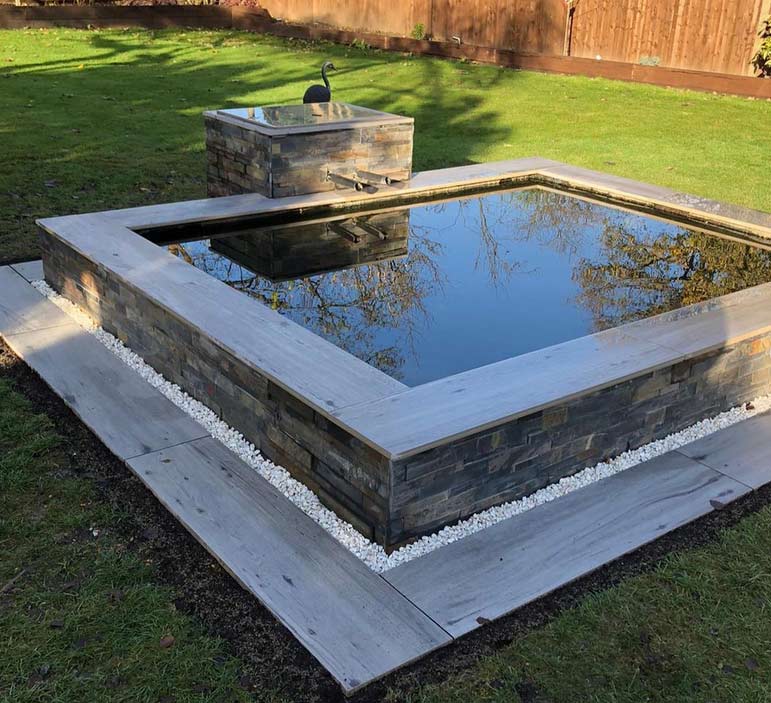If you have the time and the ambition, designing your own garden from scratch can be immensely rewarding. Creating something that is eye-catching, unique, and complements both your home and personality is a hugely satisfying experience. That said, it’s not something you should jump into without at least a little preparation. Good garden design is more than just sketching out a lawn and some borders. It takes time, patience and a keen eye for details.
Fortunately, there are certain tried and tested methods to help you with the process. If you want to know how to make your garden look better, then we can help. In our article, we discuss ten essential garden design tips that will help you turn your dream garden into a reality.
Curve the lawn
For many, the traditional British lawn is a simple, solid rectangle, but there is absolutely no reason why this should be the case. Gentle swells and curves give a more interesting shape to any lawn while simultaneously drawing the eye towards your carefully planned and planted borders. In addition, curved lawns often look more natural than straight-edged varieties, offering more opportunities for innovative design choices.
Include seating areas and furniture as a design feature
The days of unfolding garden furniture for a day in the sun before hastily tucking them away in the shed are long gone. Today, no modern garden looks truly complete without a permanent outdoor furniture fixture or two. You can make your seating area a focal point of your outdoor space, ensuring a front-row view of all your plants and flowers. Alternatively, you can hide a beautiful set of table and chairs behind a row of tall-standing plants or grasses, giving you a secluded haven all of your own. Whichever approach you choose, it’s important to pick good quality outdoor furniture that will withstand the British weather year-round.
Use plants with varying heights
Choosing plants with varying heights allows you to make the most of even the smallest garden. Plant them auditorium style, with the tallest plants at the back, medium plants in the middle, and the smallest plants and shrubs in the front row. This order ensures you see the whole array of colours and shapes from the front without having to reposition yourself.
Use water and water sounds
A garden is a place to feel at ease, and few things are more conducive to a relaxed atmosphere than the sound of water. From fountains and babbling water runs to miniature man-made falls, water features are a great addition to any garden. The gentle noise of moving water helps create a serene and peaceful environment that we all crave from time to time.
Pale boundary fences and walls
Whether you favour wooden fences, trellises or walls to mark the boundaries of your garden, consider installing features in pale colours. This simple trick will not only make your garden look bigger, it will also provide a neutral backdrop for your plants that will show them off in all their glory. If you can’t find pale fencing or brickwork, there are several wood and masonry paints you can use for the job instead.

Use ornamental grasses and shrubs with flowering plants
When raising plants in your garden, you often find yourself with unsightly gaps between to allow room for healthy roots and plant growth. You can fill these gaps and add colour and texture to your boundaries by planting ornamental grasses and shrubs. These ornaments can complement your flowering plants while not risking their development, thanks to their naturally shallow roots.
Take into account flowering seasons
Most perennial plants flower at certain times of the year. With careful planning you can ensure that your garden is always full of colour, whatever the season. Mix up your beds and borders, incorporating different perennials in each. While you may not get a full canopy of flowering plants at any given point of the year, you’re assured beautiful colours across the garden no matter the season.
Make it easy to maintain
While some enjoy the challenge of a garden that requires regular upkeep, most of us want somewhere we can enjoy a lazy summer’s afternoon. Assuming this is the case for you, ensure that your design choices point towards that result. There are plenty of low maintenance options for all areas of your garden – whether that’s installing artificial grass to eliminate the need for mowing and weeding or choosing plants that can be left to their own devices with minimal pruning and upkeep.
Levels and decking
If your garden is on different levels, the traditional methods of getting from one to the other is by a set of stone steps, but this needn’t be the case. With the right landscaping equipment, you can create a smooth transition from one level to the next by introducing natural steps and treads incorporated into the lawn. Alternatively, you can add areas of decking that make the change in height more pronounced and deliberate, perhaps adding a wooden walkway from one level to the next.
Use paving as a design feature
Hard landscaping can add a lot to a garden. You can introduce a variety of different shapes and colours in the paving that you choose. Whether you favour small, geometric, ceramic tiles to delineate the edges of your garden, large natural stone flags to act as stepping stones across the lawn, or intricately-shaped tiling laid mosaic tiles – there’s so much you can do. Combined with the curved lawns and different levels we’ve already covered; you can get some really interesting designs.
How to make your garden look better: final thoughts
We hope out 10 Essential Garden Design Tips have provided you with ideas on how to make your garden look better. However, garden design involves a sharp learning curve, and you will likely need professional assistance with some of the more challenging design features. If you’re in Bromley, Chislehurst, Blackheath, or the surrounding area, help is at hand. Contact MK Landscape and Design LTD today for any problems you have with garden design or installation. Call us on 07477 798962 or email info@mklandscapes.com and we will be happy to assist you in any way we can.

